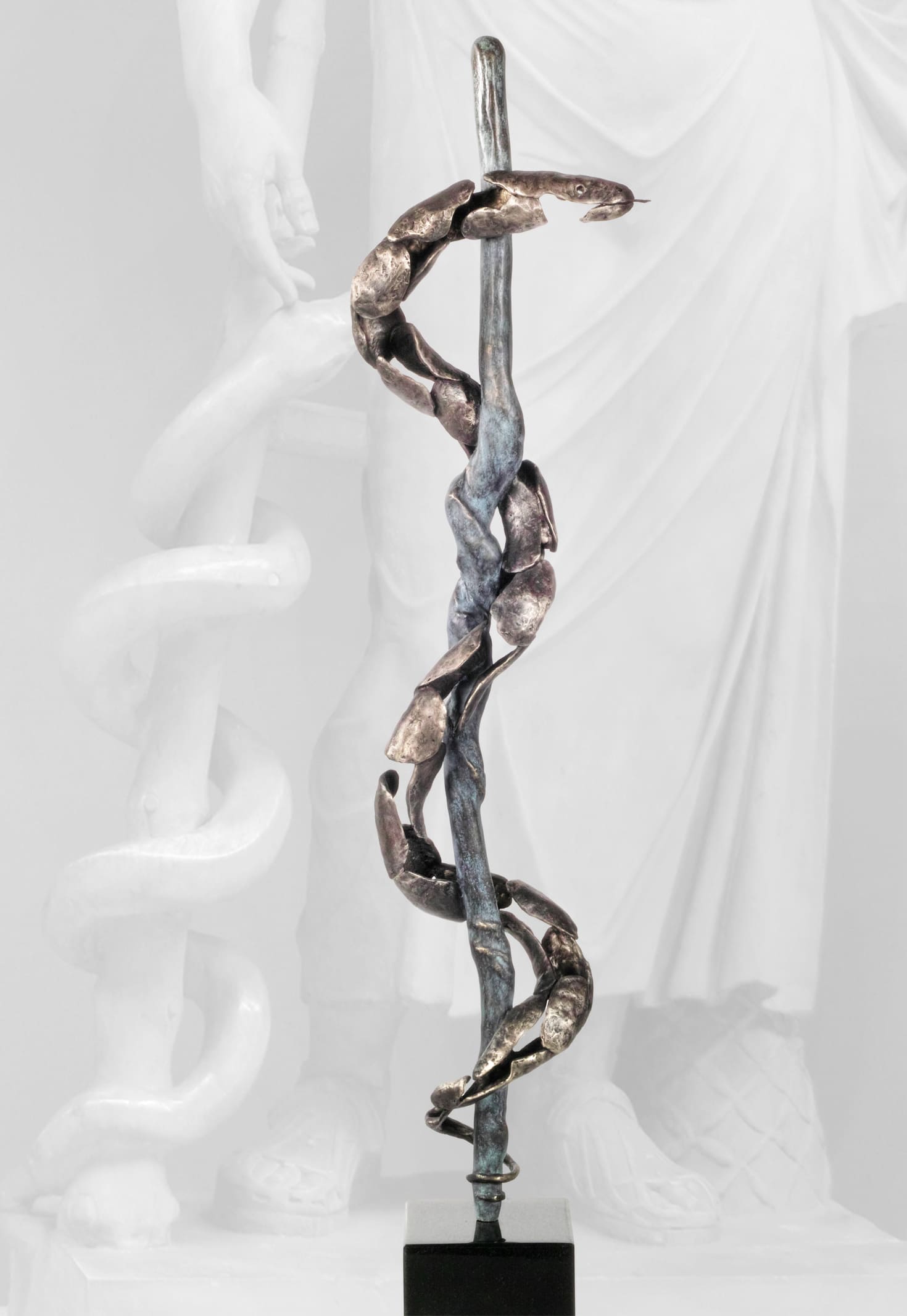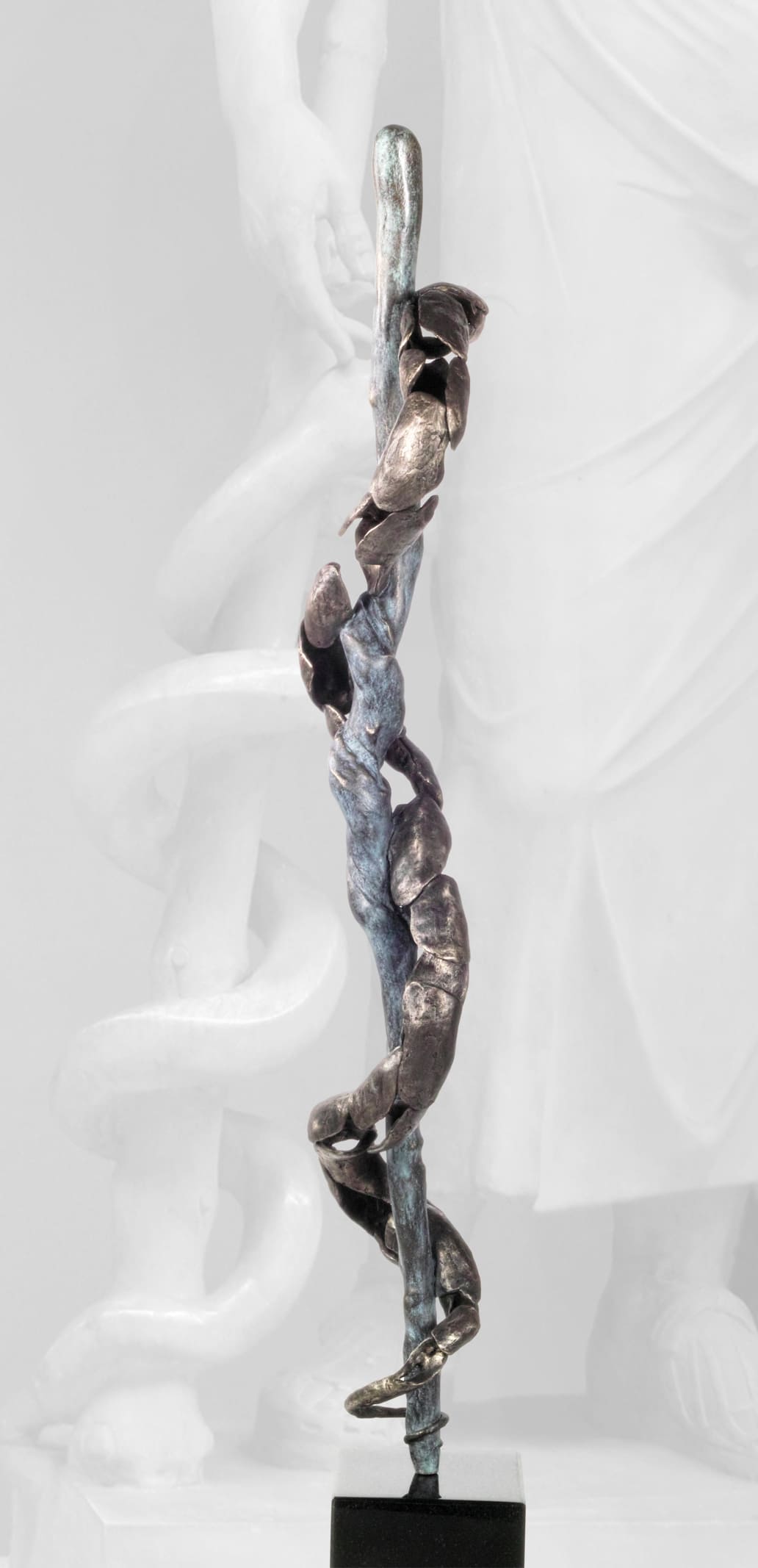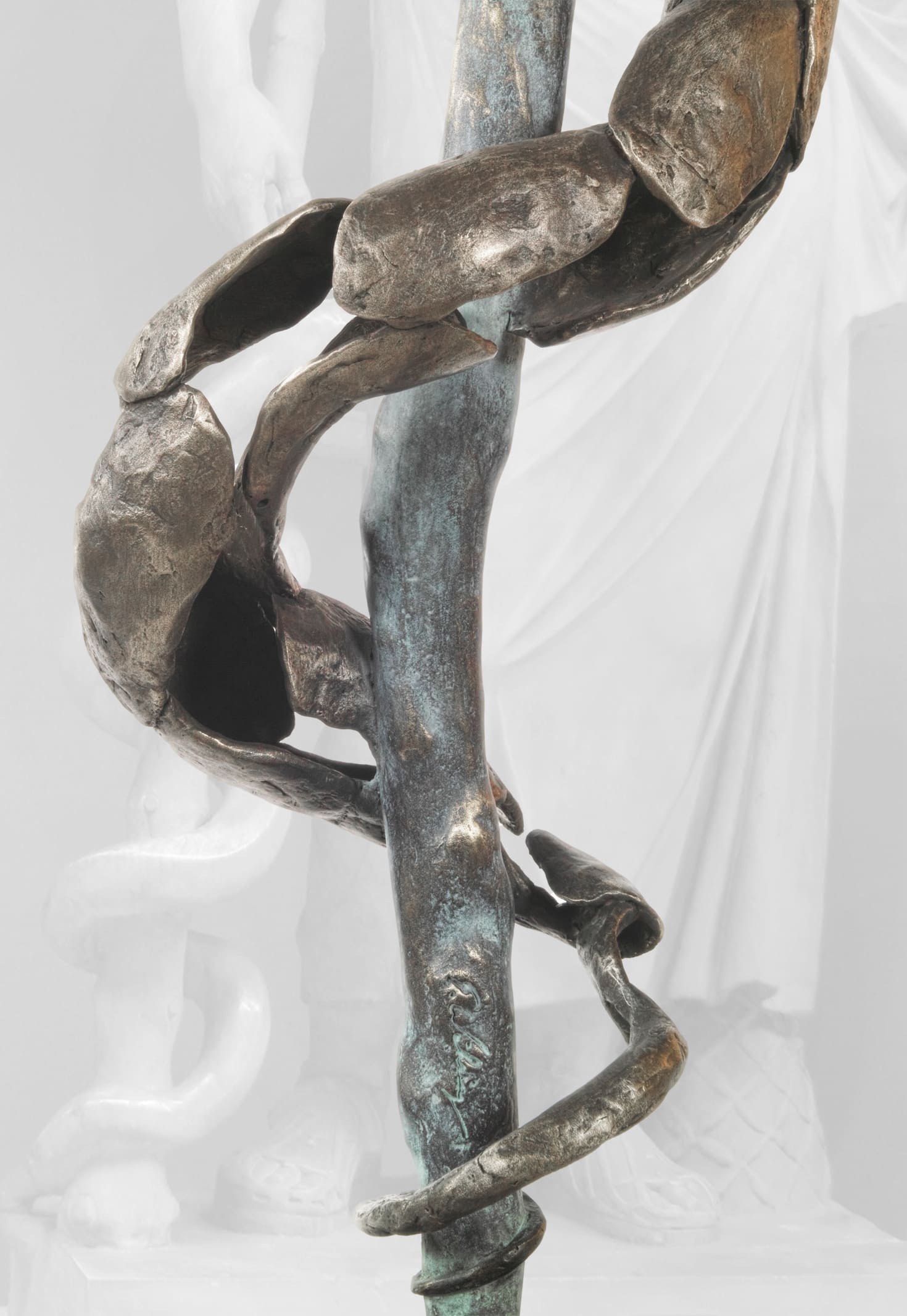The Aesculapius
The staff of Asclepios.
Limted Bronze sculpture in two sizes.
Dimensions of the sculpture: Hight 49 cm x Width 11 cm x Depth 10 cm. Edition 199 pieces.
Dimensions of the sculpture: Hight 100 cm x Width 26 cm x Depth 17 cm. Edition 99 pieces.
Prices and ordering options
via H&G The House and Garden Gallery >
Or just call directly:
Tel .: 0049 2572 952724
Or send me an email:
mail@e-waehning.de
The Aesculapius
The staff of Asclepius
Asklepios (also Aesculapius) was the son of Apollo and the Thessalian prince’s daughter Koronis. He was educated by the Centaur Cheiron and trained by him in medicine.
Because he raised a dead man to life as a doctor, he angered Hades, the ruler of the realm of the dead. At his insistence, Asclepius was struck down by Zeus with a thunderbolt because he had dared to oppose the will, the power and authority of the gods.
The Aesculapian snake (Zamenis longissimus) is the largest, non-venomous snake in Europe and can still be found in Germany, with a length of 1.2 to 2 meters.
History tells us that throughout the lifetime of Asklepios, whilst on his wanderings or on his way to the sick, he was always accompanied by an Aesculapian snake, which was curled around his walking stick.
The Aesculab rod thus became a symbol of medical science and a symbol of the medical and pharmaceutical profession.
The Asclepius ritual established itself from the 5th century BC until the end of antiquity to one of the most successful cults. The patients lay down in the asclepia temple, which is mostly outside the city, for healing sleep. In a dream the doctor appeared to them and recommended diets and other treatment methods for healing. Sometimes the patient was visited or bitten by a snake in the dream and thereby healed. On the occasion of a plague, the Sibylline books recommended 291 BC. The cult transfer from Epidaurus to Rome, whereby the snake was represented as an accompanying animal, helper and landmark. Here Asklepios got the Latin name Aesculapius.
In redesigning the Aesculapius, I left the walking pole in its natural form; a wooden branch which symbolises the tree and the connection between heaven and earth. The snake, on the other hand, I modelled not as a closed full sculpture but more abstractly and sketchily, to serve as a symbol of the snakes renewal after the shedding of its skin.







